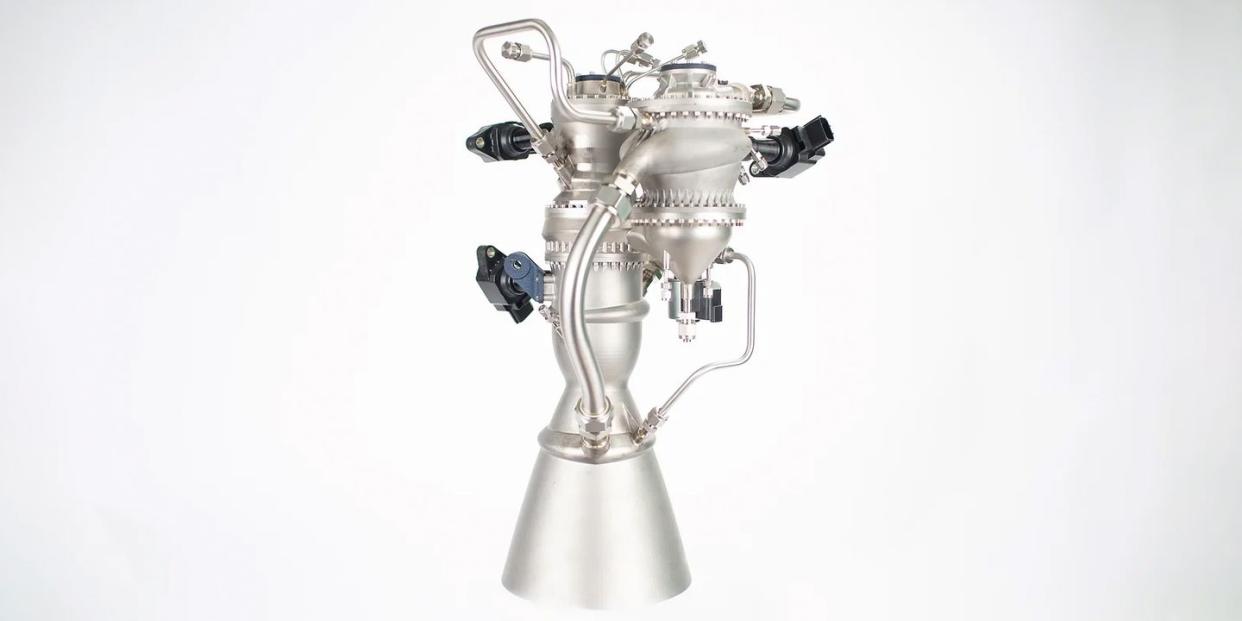The Pentagon Is Obsessed With Hypersonics, Especially Its New Rocket Engine

The Department of Defense is hungry for all things hypersonic, with around 70 initiatives developing hypersonic technology.
The Pentagon dished out an additional $1.5 million for the further development of New Frontier Aerospace 3D-printed hypersonic engine.
The Seattle-based company hopes to perform a hotfire test as early as May 2024.
Hypersonic engines come in all shapes and sizes—some are even 3D printed. At least, that’s the case with Seattle-based New Frontier Aerospace’s (NFA) Mjölnir engine.
The Mjölnir is a full-flow, 3D-printed engine whose high weight-to-thrust ratio means its could be a perfect fit for everything from hypersonic aircraft to planetary landers. Because of this reported operational flexibility along with its low-carbon design, the Department of Defense put down another $1.5 million bet (in addition to its initial $750,000 funding back in 2021) on the technology this week.
“Based on NFA’s performance in designing, 3D printing and testing the first, key component of the Mjölnir full-flow staged combustion engine in less than a year, we are pleased [National Security Innovation Capital] sees the enormous potential in the continued development and completion of Mjölnir,” NFA CEO Bill Bruner said in a press release.
It’s no secret that the Pentagon is interested in hypersonic technology—and in whatever form that might take. Project Mayhem is designing a hypersonic bomber to surpass the famous SR-71 and the Air Force conducted a final (and successful) test of its scramjet hypersonic missile earlier this month.
Those two projects, along with Mjölnir, are only three of the approximately hypersonic projects currently in development.
Initially founded in 2020, NFA’s initial mission was to re-engineer human flight by launching hypersonic-powered aircraft from “vertiports”—not entirely unlike Elon Musk’s initial rocket travel pitch back in 2017. “Aboard NFA hypersonic aircraft, passengers can leave New York in the morning, fly a comfortable 2 hour trip with a scenic view of the planet below, land at a Tokyo vertiport, conduct business, shop and be home in time for dinner,” NFA says on its website.
The first step in achieving that ambitious vision is creating the Mjölnir engine, named after Thor’s magical hammer in Norse mythology. The company hopes to design an engine “with reliability and safety characteristics better than today’s jet engines” that emits 60 percent less carbon and 90 percent fewer pollutants by running on liquified natural gas (a process the company says its working on sourcing sustainably).
Another novel feature is that it the engine is also 3D printed, though stereolithography is more commonplace in hypersonic aerospace industry than you might think. For example, Hermeus’ hypersonic Chimera engine, which is part of the Air Force’s Quarterhorse project, is created with 3D-printed parts, and the company’s CTO calls this metal additive manufacturing “a core component of our plan.”
NFA hopes to run a hotfire test of its Mjölnir early as May 2024, and if successful, the race to build Concorde’s successor will have another serious contender.
You Might Also Like
